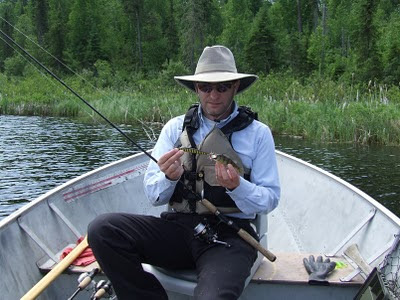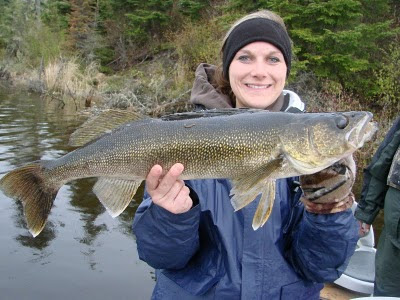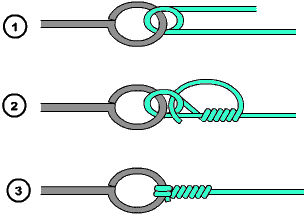
It seems like an easy question, at first.
Fish bite because they're hungry!
But then you look at scenes like the one above and you scratch your head.
This perch wasn't trying to eat the Rapala that is the same size (and color) as itself. It just isn't possible. So why did he get hooked?
I think in this case the perch was attracted to the little rubber skirt on the last treble hook. He probably was hungry and saw the little skirt at the "tail" of the other "perch" as something to eat.
I've noticed the same thing with perch when I'm ice fishing. They will hit spoons much too big for them but which have a bit of bait on the hook. I think they are actually trying to take the bait away from the larger fish (spoon).
Either way, of course, they get hooked.
Northern pike are well known to get hooked when there is the tail of a fish hanging out their throats. They couldn't possibly swallow another thing! I think they are displaying the same behavior shown by the perch, only in this case they aren't trying to take some bit of food away from another fish, they are trying to prevent the other fish from getting the morsal or fish they just swallowed.
Northern pike, especially bigger ones, will also bite in defense of their territory. When pike get to about 35 inches or so they will claim a place to themselves and will defend it against other pike of similar size. This is why it's important when casting for pike to have your lure moving smartly through the water -- to the bigger pike the lure (fish) is acting aggressively and this triggers the strike response.
Pike will also bite just because they are opportunists.
For instance, a pike might watch a surface plug plow through the water overhead and at first pay little attention. After all, he isn't hungry and the thing making the V on the surface up there obvously isn't a fish threatening his territory. But then the thing stops! It's absolutely defenseless! This just doesn't happen every day. So the pike moseys up to within a few feet of the object and when all it does is just twitch and tremble, he can't help himself! Wham!
Walleyes, on the other hand, don't seem to do this. They really do seem to bite only because they're hungry.
This is why they can be so aggravating at times -- they just aren't hungry continuously.
They also seem to have definite feeding times and other resting times.
When the weather is constant their feeding times will fall into a pattern. I think what happens is the fish know where to find the bait fish and will swoop in and gorge for a couple of hours and then head back to their resting place to digest their meal.
Not every fish follows the pattern, of course. In between the hot times there are still some walleye biting, just not like at the peak hours.
In Red Lake during hot, sunny weather, those peak hours are frequently dawn-to-10 a.m., 2 p.m. to 4 p.m. and 7 p.m. until dark.
It's a different story during inclement weather. If it's warm and rainy the walleyes might bite continuously all day. The same goes for windy days.
Another reason fish bite is what I call, "Because he did it first!"
I've seen this with perch around the dock. The kids will be dangling bits of worm right in front of a school of perch all of which seem to be disinterested (They probably all have sore mouths from being caught and released by the kids already.) Then a new perch comes on the scene, sees the worm and swoops in for it. This triggers a response among the other members of the group who suddenly start fighting to get the worm.
I can't swear this happens with bigger fish because you can't see them as easily as a school of perch. But I do know of it happening one time with lake trout.
A couple of our fishermen could "see" with their fish finder two big lake trout hanging out on the
bottom just off a point in deep water. They tried in vain to get the two lakers to bite jigs and spoons and other lures.
(This was quite some time ago when it was legal to use bait for lake trout fishing on Red Lake.)
Finally one of the fishermen decided to use the last live sucker minnow he had been saving for pike fishing.
While his buddy kept trying to get the trout to hit a jig, this fellow lowered the sucker down 60 feet. Immediately one of the trout grabbed the sucker and when it did, the other trout hit the jig!
The act of one fish feeding set off the other one to feed as well.
Click to go back to our website:
Click to see the latest on the blog:





























